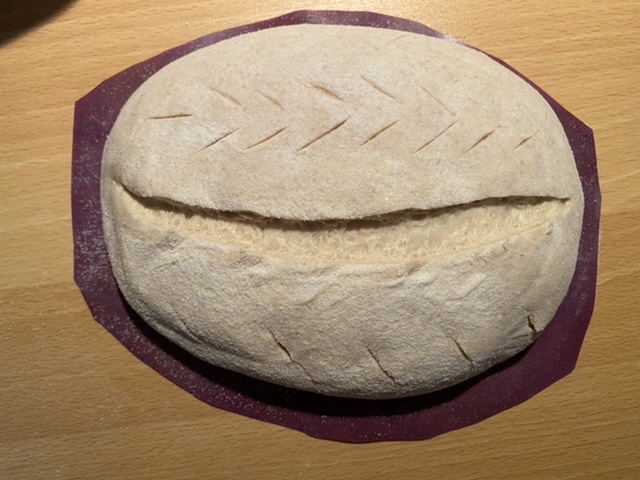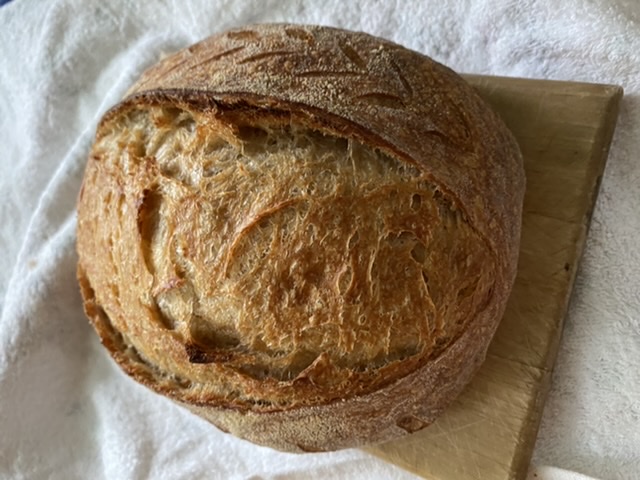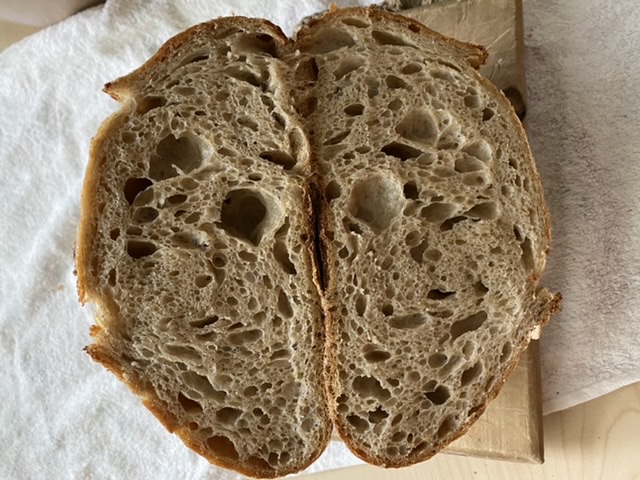Hi!
I’ve been regularly baking for about a month using the aliquot jar method to judge the extent of fermentation and still have more questions than answers.
Many recipes say that I should continue bulk until dough volume is increased by 60%. In reality I cannot measure bulk volume, because of its irregular shape. I also don’t know how bulk volume increase relates to aliquot jar sample volume increase because of all the folds.
i tried to bulk until 60% increase in the aliquot jar, then shape, proof and cold proof over night @ around 80%. Then I spotted, that the sample dough in jar tends to go up to 140-150%. So yesterday I let bulk fermentation continue until 95%, pre-shaped, bench rested, shaped and put into fridge @110% volume increase! I baked it today and it had no signs of being overfermented.
So I wonder, what shall I aim for... Maybe it is some % of given flour maximal potential? Or should I really invest into pH meter?
I add pictures of todays “overfermented” bake
(75% total hydration, 275gr bread flour, 50gr whole spelt flour, 85gr starter (100%), 232 gr water, 7 gr salt, fermetolyse 40min, mixed by hand 13 min, 1 s&f, 2 coil folds, baked in DO)



First, your bread looks pretty good.
At the risk of having you read through a long blog post, here is a link to my post on the Tartine Basic Country bread. https://www.thefreshloaf.com/node/64305/tartine-basic-country-bread Somewhere around two-thirds of the way through it you will find the photos and description of the bulk fermentation phase and (more to your question) a summary of factors that I use to judge the bulk fermentation and decide when to dump the dough, divide, and pre-shape.
Let me know if you have any questions. Hope this helps. Happy baking.
Ted
If making bread you like to eat, whatever you use to gauge your rise I'll call it, experiment. In photography there is bracketing, you expose a shot a little more, and a little less to see which looks better. Apply bracketing to your bread making. Your perfect bread is in there somewhere (it always is), you just gotta find it and that's how you'd go about it. Enjoy!